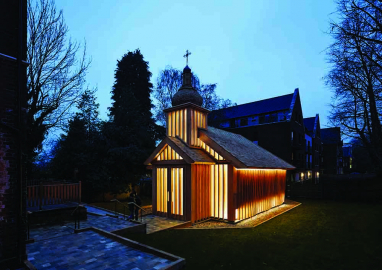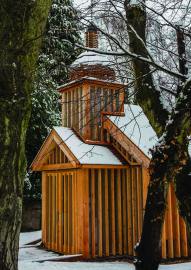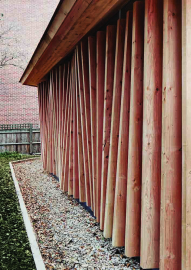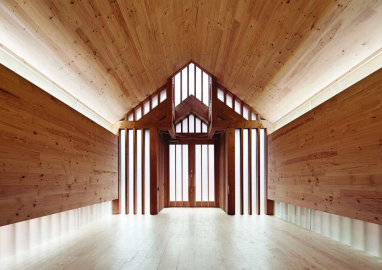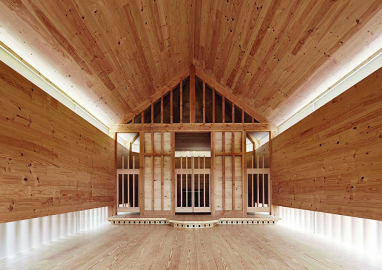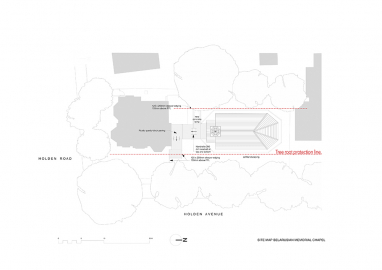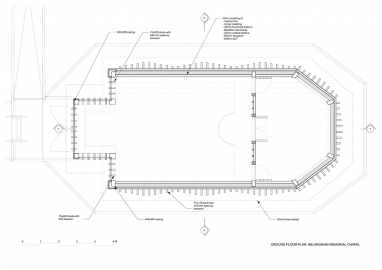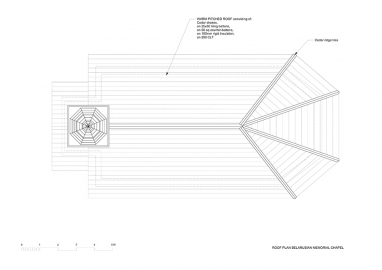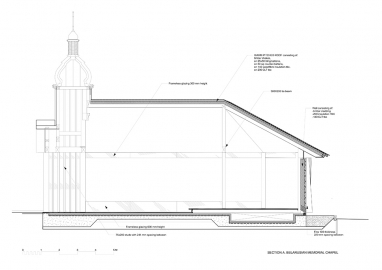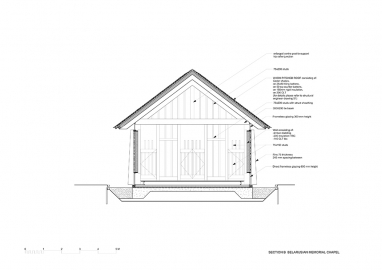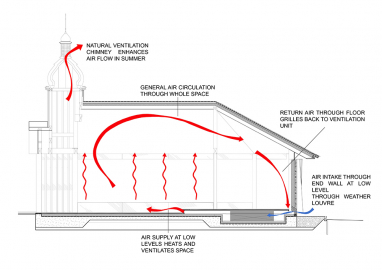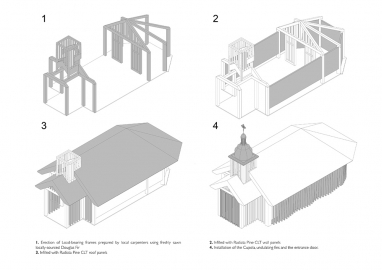Belarusian Memorial Chapel
The Belarusian Memorial Chapel is the first permanent wooden church built in London since the Great Fire of 1666. Commissioned by the Holy See, it serves the UK’s Belarusian diaspora community established by families of demobilised soldiers after WWII. It is also a lasting memorial to the victims of the 1986 Chernobyl nuclear disaster.
The Eastern Catholic church replaces a small makeshift chapel room used by the community since 1947. This is the first proper church to be built for the community in 70 years, it is surrounded by 17 protected trees up to 20 metres high in the grounds of a community and cultural centre for the Belarusian community in North London. The design is a result of close collaboration between the architect and the community both in the UK and Belarus.The after-effects of the Chernobyl disaster were particularly severe in Belarus, where 70% of the fallout fell, forcing many thousands of people to leave their homes and resettle around the world, including the UK. Wood had long been the prevalent building material in largely forested Belarus. A chapel shielded by trees therefore serves as an appropriate reminder of the tragic loss of rural settlements which resulted from both WWII and Chernobyl.
The architect spent time in Belarus undertaking extensive research into traditional wooden churches, recording and sketching them in rural villages. Traditional forms and motifs, such as baroque cupolas and vertically boarded walls, which are deeply embedded in people's collective memories, are complemented by contemporary detailing. For example, the undulating exterior fins form an unobtrusive yet dynamic facade while the baroque cupola serves as an amplifier for the bell donated as a gift by a Belgian monastery. Similarly, low and high clerestory windows running round the chapel enhance natural lighting inside while giving the appearance that the structure is floating. This illusion is part of the spiritual meaning of the building, contrasting with its structural solidity. The footprint of the chapel stays completely outside the tree-roots protection zone. At night the chapel shines from within like a beacon, a reminder of the wooden churches torched by the Nazis in the atrocities of WWII when Belarus lost a quarter of its population - the largest percentage loss in any country.
In order to protect the roots of the trees, a pre-fabricated light-weight timber structure was made by local carpenters from sustainably sourced, freshly sawn British Douglas fir, which embodies less energy than seasoned wood. Sustainability reinforces the historical connection between community and place. The frame was assembled using a combination of traditional and engineered joints to achieve stability. An exacting tolerance of 2mm was necessary to interface accurately with the machine-cut FSC certified CLT panels of fast-growing Radiata Pine from Basque, allowing quick construction with little disruption to the setting. The chapel is an architectural statement in response to Chernobyl - the worst environmental disaster in history, and the structural and material choices contribute greatly to the sustainability of the building, providing an excellent thermal envelope. Natural ventilation is promoted by the bell tower while eco-friendly heating plant hidden underneath the altar reduces mechanical services and thus the carbon footprint. Gas consumption is reduced by 100% and electricity by 60% compared with the smaller makeshift chapel room.

